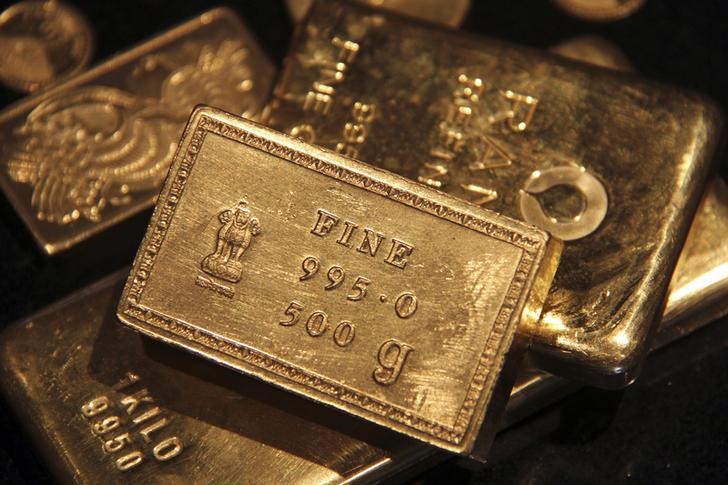Investing.com – Gold was sitting firmly on its $1,500 perch on Tuesday, helped by gloomy Brexit headlines and more U.S. data that invoked calls for another rate cut.
But the real challenge for longs in the yellow metal, said analysts, was figuring out when, and if ever, a trade deal between China and the United States would materialize, as negotiations due to start on Thursday looked ready to break down again from aggressive White House action.
U.S. gold futures for December delivery settled down just 50 cents at $1,503.90 per ounce as talks on avoiding a disorderly Brexit came perilously close to breaking down.
By 3:00 PM ET (19:00 GMT), in post-settlement trade, December gold was up $4.20, or 0.3%, at $1,508.60.
Spot gold, reflective of trades in bullion, was up $9.92, or 0.7%, at $1,503.18.
The market saw early support after U.K. Prime Minister Boris Johnson failed to persuade German Chancellor Angela Merkel in an early telephone call that his proposals for avoiding border checks in Ireland could be squared with the EU’s desire for control over the borders of its customs union and single market.
The odds of a U.S. rate cut when the Federal Open Markets Committee meets on Oct. 29-30 appeared to increase earlier after producer prices fell by the most in eight months, leaving the annual rate of factory gate inflation at 1.4%, its lowest since 2016.
Yet investors in Comex gold were holding out without clearer leads on China.
“Right now gold is consolidating and I don’t expect much more than a few dollars movement in price, up or down, until the upcoming U.S./China trade talks offer us positive or negative headlines,” said Eric Scoles, commodities strategist at RJO Futures in Chicago.
“I’m not holding my breath on a deal being completed any time soon, but a good-will gesture from either side could really make the markets move.”
A South China Morning Post report said China had toned down expectations ahead of high-level trade talks between the two countries that were to resume on Thursday after being stalled since May. The report said the Chinese delegation could depart Washington a day earlier than scheduled.
China also signaled it would hit back after the Trump administration placed eight of the country’s technology giants on a blacklist over alleged human rights violations against Muslim minorities, Bloomberg reported.
Asked Tuesday whether China would retaliate over the blacklist, foreign ministry spokesman Geng Shuang told reporters: “Stay tuned.” He also denied that Beijing was guilty of human rights abuse in the far west region of Xinjiang.
Tensions were further exacerbated by a report that the U.S. would impose a visa ban on Chinese communist officials linked to abuses in Xinjiang, Briefing.com said.
On the physical gold front, data showed that North American investors have been a late but important addition to gold’s rally this year, adding 62.1 tons to their holdings of the metal through exchange-traded funds in September. By contrast, European investors, who had bought earlier against a backdrop of Brexit concerns and the European Central Bank’s negative interest rates, added only 7.7 tons.
Global gold-backed ETFs and similar products had $3.9 billion of net inflows across all regions last month, increasing their collective holdings by 75.2 tons to 2,808 tons, the highest ever. Overall, global gold-backed ETF holdings have risen by by 13.4% to date, according to the WGC.
The previous high dated back to late 2012, at which time the gold price was near $1,700 per ounce, 18% higher than currently.
According to the WGC, Europe now accounts for 44% of all ETF holdings and it was Europe again that initially drove gold higher Tuesday after U.K. government sources briefed local media that a no-deal Brexit had become more likely.
